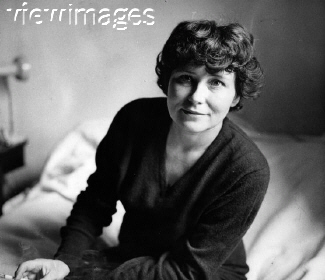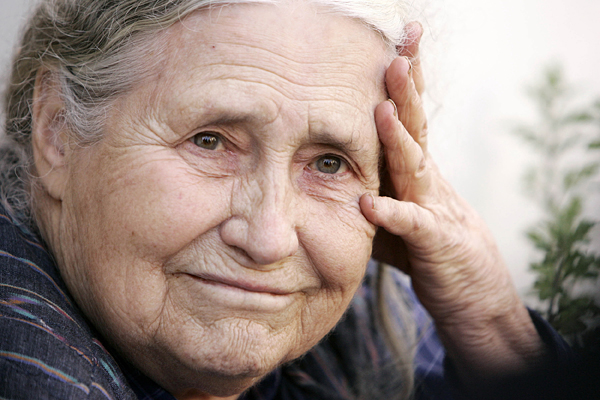Journal of Religion, Conflict and Peace
Contents
From the Editor
THE GENESIS OF JOURNAL OF RELIGION, CONFLICT, AND PEACE by Joseph Liechty
Essay
RELIGION AND THE GLOBAL WAR ON TERRORISM by Douglas M. Johnston
Articles
A KAIROS MOMENT IN THE HISTORY OF WAR by Daniel C. Maguire
War is state sponsored violence. It has been facilely justified by the misuse and misinterpretation of the “just war theory.” A proper understanding and application of that theory proves that the United States’ recent wars are immoral. This is a kairos moment in which increasingly war is being shown to be ineffective and anachronistic, and biblical wisdom on violence can be seen as newly and pointedly relevant to contemporary assessments of violent power and peacemaking.
FROM MONASTIC ETHICS TO MODERN SOCIETY by Charles Prebish
In 1964 Winston King asked the then critical question defining studies of Buddhist ethics: “What is the relation of ethics to the total structure of Buddhist doctrine and practice, particularly with regard to the definition of moral values ... and the nature of ultimate sanctions.” Nearly half a century later, this question retains its status for inquiries about Buddhist conduct. This paper examines the critical role of Vinaya, or monastic regulations for the renunciant tradition, in contrast to the code of conduct, known as śīla, for lay practitioners, and does so with respect to both the ancient Asian tradition and the modern Western tradition of Buddhists. It muses on the possibility of how these twin spires of Buddhist conduct can form the basis of a compassionate socially engaged Buddhism for today.
HOLY WAR: TOWARD A HOLISTIC UNDERSTANDING by Brian A. Victoria
To speak of “holy war” today is, at least in the West, to speak of Islam or Islamic fundamentalism. Yet, even a cursory glance at history reveals that at one time or another all of the world’s major religions have sacralized violence, at least under certain conditions. This article seeks to understand why, despite the great variety in doctrine and praxis, the world’s major religions have, and continue to, support warfare under such guises as “just war,” “jihad,” or “defense of the [Buddha] Dharma.” While recognizing the important role that doctrine, especially competing claims of exclusive truth, plays in religiously endorsed warfare, this article seeks to take a holistic look at the multiple causes of this phenomenon, including anthropological, sociological, economic, psychological and even evolutionary factors. A wide variety of historical examples from multiple faiths compliment the theoretical constructs, revealing that the elimination of holy war challenges believers to live up to the highest tenets of their respective faiths.
MEETING IN EXILE by Gerald W. Schlabach
The designation “Historic Peace Churches” emerged from the coalition of Mennonites, Friends or Quakers, and Brethren as they advocated for the rights of conscientious objectors in the pre-World War II years. Their shared conviction has been that Jesus’ life and teaching makes the rejection of violence normative for all Christians. Yet other churches believe themselves to be working for peace and sometimes call themselves peace churches too. Mennonites and Catholics exemplify different yet overlapping understandings of what it means to be a peace church. Schlabach argues that as Christians recover a fuller sense of what it means to be a global church, in a globalizing age, a growing sense of identity and identification with a people spread through many nations will make it harder and harder for Christians to kill. Encouraging Christians to recognize themselves as a transnational people that always lives in diaspora will thus do more to create a global peace church than resolving the longstanding impasse between Christian pacifist and just war positions.
RELIGIOUS AND CULTURAL DIMENSIONS OF PEACEBUILDING by Nathan C. Funk
Contemporary Islamic-Western tensions are challenging scholars and practitioners of conflict resolution to engage more proactively with cultural and religious dimensions of peacebuilding. To be effective, however, responses to politicized religion need to recognize the complex and dynamic nature of contemporary identity conflicts, which are driven by a broad array of factors and not by religious ideas alone. Fundamentalism and religiously justified violence need to be understood as outcomes that have been reinforced by protracted confrontation and rivalry between identity groups, and not as autonomous phenomena abstracted from historical, cultural, political, or economic contexts. When informed by such an analysis, religious and cultural peacebuilding becomes a process through which the identity dynamics of conflict are transformed through dialogical engagement, activation of religious peace resources, and integration of religiously informed rationales for peacemaking with other forms of peace and justice advocacy. The essay concludes with a brief survey of priorities for Islamic-Western peacemaking and a call for heightened Canadian efforts to bridge cultural and religious divides.
SACRIFICING THE SACRIFICES OF WAR by Stanley Hauerwas
Hauerwas plays out William James’ call for a moral equivalent of war. He delves more deeply into the compelling nature of war in the search for a compelling nature of peace. In war we are compelled not by the sacrifice of life but by the sacrifice of our unwillingness to kill. What is the moral equivalent for peacemakers?
THE LETTER KILLETH by Hector Avalos
Reinterpretation of violent biblical texts fails both morally and practically in stemming the use of sacred scriptures to justify violence, argues Hector Avalos. Accordingly, he outlines a case for decanonizing biblical texts, using an explicit theological principle that any portrayal of a loving God as endorsing or committing violence must be understood as false. Although the author is a secular humanist, he demonstrates that a plea for decanonizing violent texts can be made within a Christian theological tradition. Avalos reviews historical examples of how Anabaptist and other Christian traditions have rethought the biblical canon, and he proposes that using nonviolence as a fundamental theological criterion for canonicity would yield a Bible more consistent with Christian pacifistic principles.
THE SIGNIFICANCE OF RELIGIONS FOR SOCIAL JUSTICE AND A CULTURE OF PEACE by Patricia M. Mische
One of the critical elements for a culture of peace is social justice. Perceptions of injustice lead to discontent, non-cooperation, conflict, civil unrest, and war. Religions have a powerful role in shaping ideas of social justice and legitimacy, and also in responding to perceptions of injustice and illegitimacy—e.g., passively accepting human suffering and injustice as the will of God and a badge of moral merit, or actively opposing them, and if so, whether by violent or nonviolent means. One reason that religions are often so powerful in war or peace is that they carry the archetypes, images, and symbols of meaning and identity that inform people’s thoughts and actions at deep, often unconscious levels. To maximize the potential of religions to contribute to peace and minimize those that breed war requires understanding these deep, unconscious levels of knowing and cultural formation; this is more elusive and difficult than addressing direct or even systemic forms of violence.
Book Reviews
FIGHTING WORDS: THE ORIGINS OF RELIGIOUS VIOLENCE by Hector Avalos
Joshua Thomas
IDENTITY AND VIOLENCE: THE ILLUSION OF DESTINY by Amartya Sen
David M. Craig
PEOPLE POWER: FIFTY PEACEMAKERS AND THEIR COMMUNITIES by Michael True
Jeffrey Epstein
RELIGION, VIOLENCE, MEMORY, AND PLACE by Oren Baruch Stier and J. Shawn Landres, eds
Susan Shepler
THE LESSONS OF NONVIOLENCE: THEORY AND PRACTICE IN A WORLD OF CONFLICT by Tom H. Hastings
Kenneth L. Brown
Volume 1, Issue 1
Fall 2007
Journal of Religion, Conflict, and Peace is a project of Plowshares, a peace studies collaborative of Earlham, Goshen, and Manchester Colleges. The journal is shaped by, but not confined to, the perspectives of the three historic peace churches—Society of Friends, Church of the Brethren, and the Mennonite Church—associated with the colleges that compose the collaborative. The journal addresses both the problem of religion and conflict and the possibility and practices of peace, giving particular attention to peace.
Journal of Religion, Conflict, and Peace. Copyright © 2007.
Published by Plowshares: a Peace Studies Collaborative of Earlham, Goshen, and Manchester Colleges.
Readers may duplicate articles and quote from the journal without permission, provided no changes are
made in the text and full credit is given to the author.









